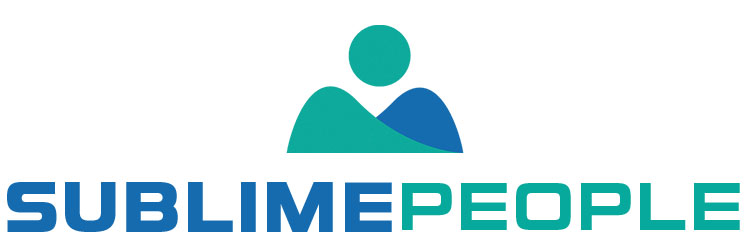The process of hiring employees is often referred to as the hiring cycle. It involves a series of steps that organizations follow to attract, assess, interview, select, and onboard candidates for job positions. The hiring cycle is a critical function of the human resources department and is essential for the growth and success of any organization. It can be a time-consuming and resource-intensive process that requires careful planning and execution. However, a well-managed hiring cycle can result in the recruitment of top-quality talent, which can ultimately lead to increased productivity and profitability for the organization. In this article, we will explore the different stages of the hiring cycle and discuss some best practices for each step.
In this Article:
Why is the hiring cycle so important?
The hiring cycle is essential for several reasons. Firstly, it enables organizations to attract and select top-quality talent, which is critical for achieving their business objectives. Effective recruitment can help organizations find employees with the skills, knowledge, and experience needed to succeed in the job role, which can ultimately lead to increased productivity and profitability.
Secondly, the hiring cycle is important for maintaining a diverse and inclusive workplace. By following a structured recruitment process, organizations can ensure that all candidates are evaluated based on their skills, qualifications, and experience, rather than their race, gender, or other personal characteristics. This can help to prevent discrimination and promote a more equitable workplace.
Thirdly, the hiring cycle is essential for complying with legal requirements and industry standards. Organizations must follow specific regulations and guidelines when recruiting employees, and failing to do so can result in legal and financial consequences.
Stages of the hiring cycle

1. Job postings
The most common type of job posting is a traditional advertisement in a newspaper or online. In this case, the employer through their human resource department lists a job opening together with the job description, and potential candidates can apply by sending in their resume and cover letter.
Another common type of job posting is a help-wanted ad. This is a listing that is typically found in the classified section of a newspaper and includes a short job description as well as the qualifications needed.
The HR team may also post a job opportunity and job requirements on websites. In these cases, qualified candidates can either apply directly through the website or send their resumes and cover letters to the employer’s email address.
2. Sifting through resumes
The Applicant tracking system (ATS) has made the process of reviewing resumes much easier, but it can still be a daunting task. Recruiters and hiring managers often spend hours sifting through resumes, looking for the best candidates.
- The number one step is to make sure that the hiring criteria are clearly defined. What talent pool in terms of skills and experience is the company looking for? What is the minimum level of education or qualifications that you require? Once you have these criteria established, you can begin to narrow down the pool of resumes.
- One way to do this is by sorting resumes according to the date they were submitted. The most recent submissions will be at the top of the list, and the hiring manager can work their way down from there. This will give the hiring team a good idea of which candidates are most interested in the position.
- The hiring team can also sort resumes according to their source. For example, they might want to focus on job seekers who were referred by current employees through the employee referral program or who have been referred by a recruiting agency.
- It’s also important to look at each candidate’s resume individually. Read through each one and make notes about which candidates seem to have the skills and experience that you are looking for. If a resume doesn’t include all of the information that you need, mark it as “not qualified.”
- Lastly, schedule in-person interviews with the most suitable candidates.
3. Interviewing candidates
The interview process is one of the most important steps in the recruitment process. It is the chance for the hiring manager to evaluate potential employees and see if they are a good fit for the company. Here are some tips the hiring team can use while conducting interviews for potential employees:
1. Prepare ahead of time.
The hiring managers should have a list of questions to ask each candidate.
2. Be organized.
The HR department should have a place for job candidates to sit with all its materials ready to go for the job interview.
3. Be professional.
A hiring manager should always dress appropriately and act professionally during an interview.
4. Be prepared to make decisions.
After the final interviews, human resources should have enough information to make a hiring decision.
4. Reference and Background checks
Employers conduct reference and background checks to verify an applicant’s employment history and to get feedback on the individual’s skills and work habits. The most common reference and background checks are phone calls to the job candidate’s previous employers. Some employers also contact the applicant’s personal references, such as friends or family members.
Reference checks are typically conducted after a job offer has been made, but before the offer is final. The employer will ask the applicant for a list of references and then contact those references to get feedback.
Some employers use automated reference-checking services that contact references by email or telephone. These services can provide employers with a report that includes a summary of the reference’s comments about the applicant.
5. Making a decision
When it comes to making a final decision about the new hire, there are many factors to consider. Some of the most important factors include:
- The candidate’s qualifications and experience
- The candidate’s fit for the job
- The candidate’s availability
- The candidate’s cost
Once you have considered all of these factors, you need to make a decision about who to hire. This decision can be difficult, but by weighing all of the pros and cons, you can make the best decision for your company and the company culture.
6. Offering the job
When the HR team gives the job offer, it should include a salary that is appropriate for the position as well as the company. The human resource may also want to consider offering a sign-on bonus or other benefits, such as paid time off or pension contributions.
If the right candidate accepts your offer, be sure to finalize the entire process as soon as possible so the new hire can begin working. This may include completing an employment contract, setting up a payroll account, and arranging for insurance coverage.
7. Onboarding new employees
Onboarding new employees is a critical process for any company. It can be the difference between a new hire succeeding or failing in their job performance.
The onboarding process should be designed to help new company hires feel welcome and comfortable in their new role, while also providing them with the tools and information they need to be successful. This process typically includes things like:
- Employee orientation to the company and company culture
- Introduction to the team of existing employees they will be working with
- Training on the job duties
- Guidance on how to succeed in the job role
Managers need to take the time to orient new employees and help them get up to speed as quickly as possible. This will not only help the new employee be successful, but it will also help prevent them from feeling overwhelmed or lost in their new role.

A word from SublimePeople
The hiring cycle is a critical process for organizations to identify and select top-quality candidates for job positions. The cycle involves various stages, including job analysis, sourcing candidates, screening resumes, conducting interviews, and onboarding successful candidates. Each stage of the cycle is essential to ensure that the organization hires the best-suited candidate for the role. A well-managed hiring cycle enables organizations to maintain a fair and compliant recruitment process.
By hiring top-quality candidates through an effective hiring cycle, organizations can build a talented workforce that can contribute to their success and growth in the long run.




